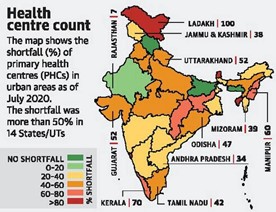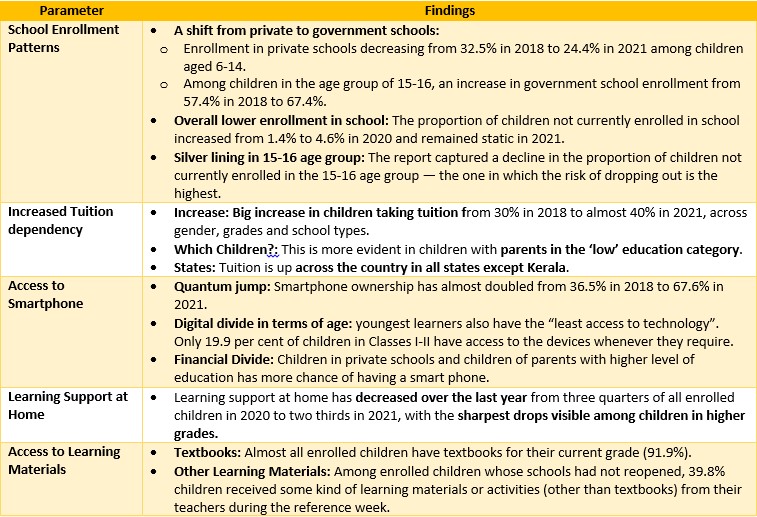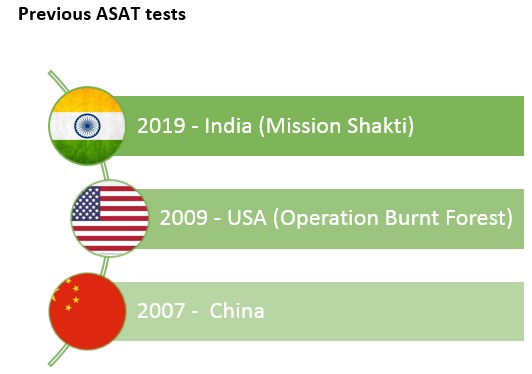Tuesday, 9th November 2021
Principles of Responsible Banking (PRBs)
In News
Recently, at the CoP 26 UN Climate Change Conference several banks have signed up to Gfanz (the Glasgow Financial Alliance for Net Zero).
About the news
- Gfanz provides a forum for leading financial institutions to accelerate the transition to a net-zero global economy by 2050.
- Every company, bank, insurer and investor will need to adjust their business models, develop credible plans for the transition to a low-carbon, climate resilient future and then implement those plans.
- This is one of the many initiatives taken worldwide to promote sustainable green finance and the important among them is the Principles of Responsible Banking (PRBs).
About the Principles of Responsible Banking (PRBs)
- PRBs are voluntary commitments, launched at the UN General Assembly by the United Nations Environment Programme Finance Initiative (UNEP FI).
- They are a unique framework for ensuring that signatory banks’ strategy and practice align with the Sustainable Development Goals and the Paris Climate Agreement.
- The framework consists of 6 Principles designed to bring purpose, vision and ambition to sustainable finance.
- Signatory banks commit to embedding these 6 principles across all business areas, at the strategic, portfolio and transactional levels.
- Banking Board, made up of 11 banking representatives and 1 from the UN is established to ensure effective implementation of PRBs.
- YES Bank is the only Indian signatory to this framework and is also a Founding Bank of the Principles)
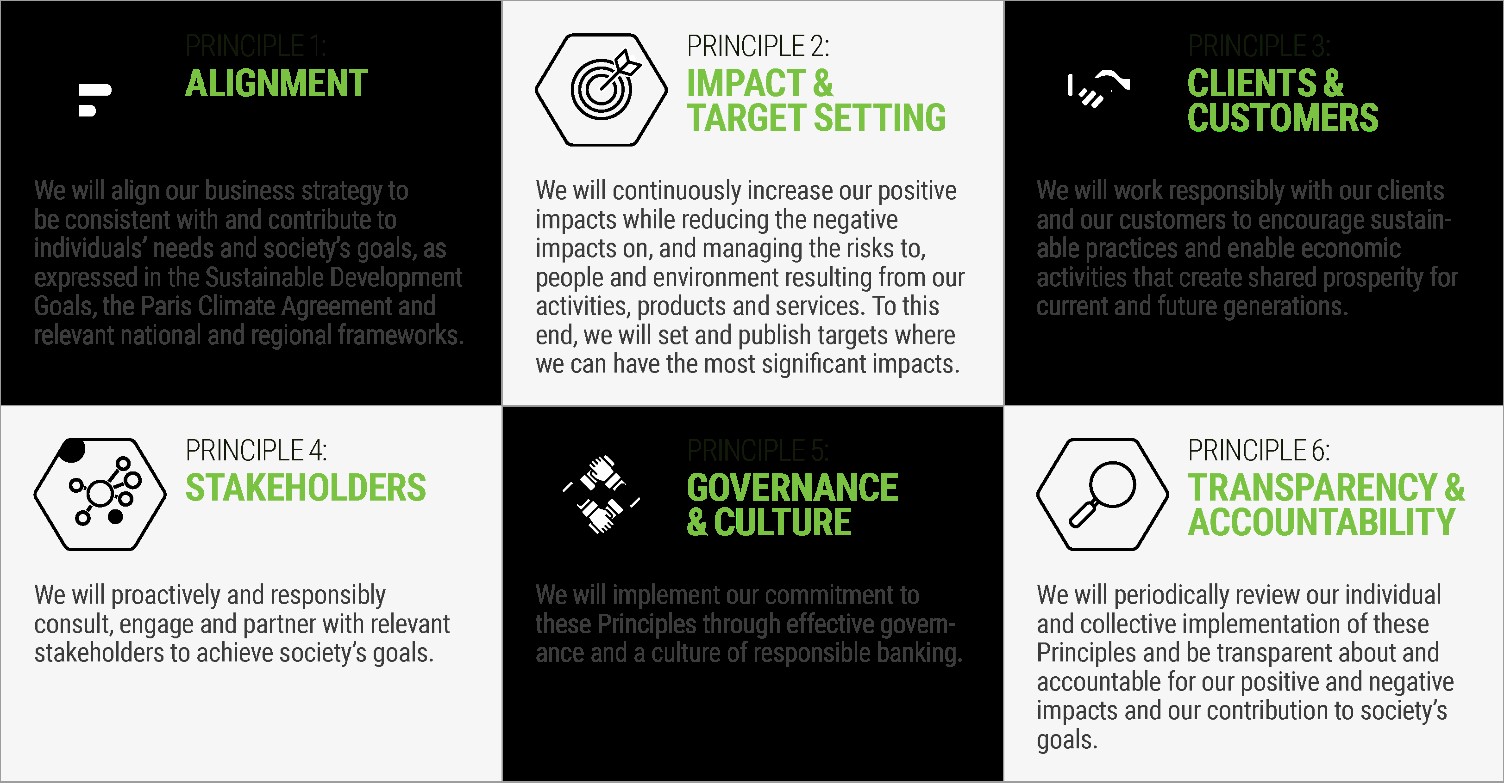
Sources:
Global Drug Policy Index
In News
The Global Drug Policy Index that was recently released has ranked 30 global nations based on humane and health-driven drug policies.
Findings of the Index
- Low overall Score: The global dominance of drug policies based on repression and punishment has led to low scores overall, with a median score of just 48/100, and the top-ranking country (Norway) only reaching 74/100.
- Differing Standards: Differences Standards and expectations from civil society experts on drug policy implementation vary from country to country
- Unequal Policies: Inequality is deeply seated in global drug policies, with the top-ranking 5 countries scoring 3 times as much as the lowest-ranking 5 countries. This is in part due to the colonial legacy of the ‘war on drugs’ approach.
- Marginalized most affected: Drug policies disproportionately affect people marginalised on the basis of their gender, ethnicity, sexual orientation and socio-economic status.
- India’s Performance: India’s rank is 18 out of 30 countries. India has an overall score of 46/100
- Capital Punishments for Drug Offences: Only 3 out of 30 countries namely India, Indonesia and Thailand retain capital punishment for certain drug offences.
- However, death penalty for drug offences is contrary to International Human Rights Standards.
- Widening gap between Govt policies and implementation: The report notes a huge gap between the government policies and their implementation on ensuring access to controlled medicines (for relief of pain and suffering) especially in countries like India, Indonesia, Mexico and Senegal which score high on policy but score 0/100 for actual availability of these controlled medicines.
About the Index
- About: The Global Drug Policy Index is the first ever composite index that documents, measures and compares national-level drug policies. It is a project of the Harm Reduction Consortium.
- It provides each country with a score and ranking that shows how much national drug policies and their implementation align with the principles of human rights, health and development.
- Reference Indicators: Its indicators and dimensions are drawn from the ‘United Nations System Common Position supporting the implementation of the international drug control policy through effective inter-agency collaboration’.
- Why was It Developed? This Index was developed in a context where differences in government approaches to drug policies have reached a breaking point.
- While the use of certain drugs is legal in one country, being in possession of the same substances elsewhere is met with compulsory detention, life imprisonment or even death.
- In addition, existing tools that track global trends in drug markets and drug policy mostly focus on indicators related to drug law enforcement (arrests, seizures, incarceration) and eradication efforts - providing an incomplete and skewed picture of drug policies.

Source:
- Telling numbers: A ranking of countries on drug policies and implementation
- Global Drug Index shows how most countries fail drug policy test
- Global Drug Policy Index: Countries are failing to address illegal drug use adequately
Image Source:
Sustainable agriculture action agenda
In News
India is among 27 countries to sign up to a sustainable agriculture action agenda at the COP26 climate summit in Glasgow, laying out new commitments to make farming more sustainable and less polluting.
About the News
- The 'Sustainable Agriculture Policy Action Agenda for the Transition to Sustainable Agriculture and Global Action Agenda for Innovation in Agriculture' was among the highlight action pledges at the 26th Conference of Parties (COP26) of the UNFCCC.
- Sustainable agriculture can be defined in many ways, but ultimately it seeks to sustain farmers, resources and communities by promoting farming practices and methods that are profitable, environmentally sound and good for communities.
- Sustainable agriculture fits into and complements modern agriculture. It draws and learns from organic farming.
Need for Sustainable Agriculture Policy Action Agenda
- Heightened Risks: Food producers face growing risks from unsustainable production and climate impacts.
- Contributes to Global Climate Change: Agriculture contributes a significant share of the greenhouse gas emissions that cause climate change – 17% directly through agricultural activities and an additional 7-14% through land use changes (OECD).
- Lack of public support: According to World Bank analysis, only 5% of direct public support for agriculture explicitly targets conservation and other public goods, and only 6% supports research, extension, and technical assistance.
- Misdirected public support: At times support provided by the government to agriculture is misplaced which ends up encouraging farmers to over-use agricultural inputs, like fertilizer or water which can induce negative environmental and health impacts.
Actions which governments should take to promote sustainable agriculture
- Cross-government approaches: Develop or integrate cross-government approaches to achieve sustainable agriculture in line with Paris Agreement goals, net zero/negative emissions etc.
- Support to Farmers: Direct significant public support to farmers, including smallholder farmers, to incentivize and support uptake or continued use of sustainable agricultural practices and, or reward better outcomes for climate and biodiversity loss.
- Increase Investment: Significantly increase investment in agricultural R&D for ‘multiple-win innovations’ and agricultural extensions that support healthy diets, protect natural resources and biodiversity and help to mitigate climate change;
- Funding: Channel public funds, including increased climate finance, to develop more equitable partnerships and supply chains and support the just rural transition in developing countries;
- Policy Orientation: Orient public policies to the achievement of nutrition and sustainability goals, including (where appropriate) shifting diets.
Sources:
Report on Logistics Ease Across Different States (LEADS) 2021
In News
Ministry of Commerce and Industry releases report on Logistics Ease Across Different States (LEADS) 2021.
About LEADS Report
- LEADS is an annual exercise that assesses the logistics ecosystem of a State/UT and promotes competitive federalism. It has a three-fold objective -
- Rank States/UTs in the logistics ecosystem
- Facilitate feedback from stakeholders involved in the logistics value chain
- Recommend action points based on the issues and challenges faced
- The first version of the report, LEADS 2018, focused on export-import trade and assessed the efficiency of the logistics ecosystem in each State and UT.
- The second edition– LEADS 2019, covered both international and domestic trade.
- The LEADS 2021 is the third edition and it analyses domestic and EXIM logistics ecosystem of the state.
LEADS Index 2021 Ranking
- A total of 21 perception and objective variables have been statistically analysed to prepare a composite index basis upon which the states have been ranked.
- The perception variables include indicators related to Infrastructure, Services, and Operating and Regulatory Environment.
- The Objective variables are related to policy, institutional framework, current enforcement mechanism, warehousing approvals and processes, smart enforcement, city logistics, drivers’ empowerment, etc.
- Gujarat, Haryana and Punjab have emerged as the top performers in the LEADS 2021 index. Proactive policies, well-developed infrastructure and services driven by a responsive Government have helped Gujarat to maintain its rank.
- Within the North Eastern States and Himalayan Region, Jammu and Kashmir is the top ranker followed by Sikkim and Meghalaya.
- Delhi stands at the top rank among Other UTs.
- Uttar Pradesh, Uttarakhand and Jharkhand have witnessed a remarkable improvement in their ranks compared to 2019 LEADS ranking and have emerged as the top improvers.
Logistics sector in India
- Logistics Industry includes all activities of the supply chain such as transportation, customer service, inventory management, flow of information and order processing. Other activities of the supply chain are warehousing, material handling, purchasing, packaging, information dissemination and maintenance among others.
- Currently, India’s logistics sector is valued at $160 billion and employs over 22 million people It is expected to grow at a CAGR of 10% to $215 billion by 2022.
- India's logistics cost is estimated to be about 14% of its GDP compared to 8-10 percent for developed countries.

Theoretical Basis of an efficient Logistics Sector
- Backbone of the supply chain - Ignoring this industry would create a sustained demand-supply mismatch in the country – which means that due to operational inefficiencies, the consumers (from where the demand comes) aren’t able to procure any products from the producers (from where the supply comes). This would mean that the country isn’t operating in its full capacity and such a scenario would slow down the growth and future growth potential of the country.
- Indicator of the health of the economy. This means that during the early stages of an economic upswing, producers start shipping goods in anticipation of stronger demand. This implies that the logistics sector will be operating at a high capacity as demand for logistic services rises. Conversely, the inception of an economic recession sees producers cut supply and ship lesser goods – which results in the logistics sector taking a hit. So, by looking at the logistics sector we can gauge/predict roughly the economic situation.
Logistics at the tipping point in India – Need to Improve Logistics Competitiveness of India
- India is world's fifth largest economy by nominal GDP and is one of the fastest-growing economies globally. Improving supply chain efficiencies and reducing logistics costs are fundamental to meet the well-defined aspiration to become a $5 trillion economy.
- Improvement in Logistics is the cornerstone of the Government’s push towards achieving Aatmanirbhar Bharat. The government is taking various initiatives to improve logistics ecosystem.
- Infrastructure development initiatives like Sagarmala, Bharatmala, Dedicated Freight Corridors (DFCs), Jal Marg Vikas and UDAN Schemes are important enablers for enhanced logistics.
- Regulatory and process related reforms like paperless EXIM trade process through E-Sanchit, faceless assessment through Turant Customs and introduction of mandatory electronic toll collection system (FASTag) have contributed to increasing the efficiency of the logistics sector.
- Government is targeting an investment of more than Rs 100 lakh Crore on infrastructure over the next five years through ‘Gati-Shakti’ program.
Hence it is an exciting time for logistics companies. However, India needs to focus on addressing issues such as sub optimal modal mix, fragmented regulatory/Institutional regime, warehousing and packaging losses, and shortage of skilled manpower, lack of automation, sub optimal fleet size and lack of inter-modal terminals and emerging eco-friendly Green Logistics.

Suggestive initiatives for States and UTs by LEADS Report
- Framing State Logistics policy and State Logistics Master Plan in alignment with the National Master plan considering freight flows, available infrastructure, and future requirements.
- Establishing a robust institutional mechanism: The logistics sector comes under the purview of multiple agencies in the State, including the State Transport Dept, Police, RTO etc. States/UTs should appoint Nodal Officer for the Logistics sector and constitute State Level coordination committee.
- Implementing single-window clearance system for logistics to remove Delay and multiplicity and attract investment in the logistics infrastructure sector.
- Establishing effective grievance redressal and dispute resolution mechanism would aid in developing a common and seamless portal for logistics related approvals/clearances and grievances redressal.
- Enabling skilling in logistics through State skilling infrastructure: States/UTs can play a key role in skilling through the Pradhan Mantri Kaushal Vikas Yojana (PMKVY), Deen Dayal Upadhyay Grameen Kaushalya Yojana (DDU-GKY) and State skill missions.
Conclusion
With the efforts in the right direction, it is hoped that the vision of logistics cost will be reduced by 5% in the next five years. This will ensure that the Logistics sector serves as an engine of growth and a key driver for transforming India into a five trillion-dollar economy.
Question: It is being argued that the Logistics sector is at the tipping point in India. Justify this with help of examples.
Sources:
This Day in History - Legal Services Day
On November 9, 1995, Legal Services Day was first started by the Supreme Court of India to offer legal services free of charge to people from the weaker and poor sections of the society. The Legal Services Authorities Act of 1987 was passed on October 11, 1987. The act went into force on November 9, 1995. On December 5, 1995, India's National Legal Services Authority (NALSA) was established under its rules. NALSA engaged in activities such as providing free legal advice and representation to the poor, as well as resolving matters through mediation and amicable settlement. It was a one-of-a-kind initiative to reduce the backlog in Indian courts while also providing access to justice for low-income litigants.

Sources:
Image of the Day - Migratory Birds
This is image of migratory birds arriving in Visakhapatnam. Podugupalem Lake is popular for raptors like red-necked falcon, marsh harrier and short-toed snake eagle. November to February is the season when the migratory species arrive. Visakhapatnam and its surrounding regions have quite a few water bodies where migratory bird species are recorded. “Araku and Lambasingi are promising places with more than 100 species. The Meghadrigedda reservoir, surrounded by hill ranges of Eastern Ghats on all sides, with steep slopes and deep gullies, is a wintering ground for many migratory birds, especially from the Central Asian Flyway. Habitat destruction, industrialisation in nearby lands are all contributing to the decrease in number of birds in the reservoir.
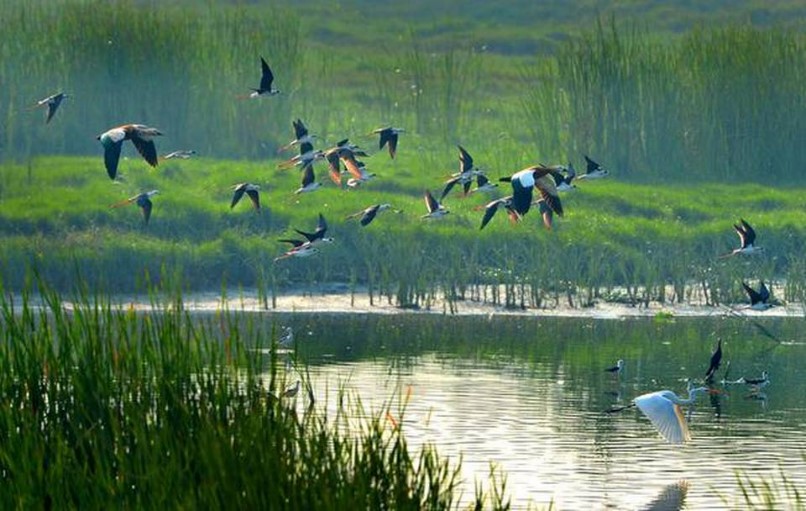
Source:
Adi Shankaracharya - Edukemy Current Affairs
- Context: A 12-foot statue of Adi Shankaracharya has been recently unveiled at Kedarnath.
- Kedarnath is where the Acharya is believed to have attained samadhi at the age of 32 in the 9th century
- Adi Shankara was born in Kaladi village on the bank of the Periyar, the largest river in Kerala.
- He was a scholar-monk who was initiated into studies by Govindacharya, a disciple of the scholar Gaudapada Acharya and is believed to be the reincarnation of Lord Shiva.
- His ideology was Advaita Vedanta that challenged the prevailing philosophical traditions including Buddhism and Jainism.
- Advaita Vedanta articulates a philosophical position of radical non-dualism. According to Advaita Vedantins, the Upanishads reveal a fundamental principle of non-duality termed ‘brahman’, which is the reality of all things.
- Adi Shankara is generally identified as the author of 116 works — among them the celebrated commentaries (bhashyas) on 10 Upanishads, the Brahmasutra and the Gita, and poetic works including Vivekachudamani, Maneesha Panchakam, and Saundaryalahiri.
- It has also been claimed that Adi Shankara composed texts like Shankarasmrithi, which seeks to establish the social supremacy of Nambuthiri Brahmins.
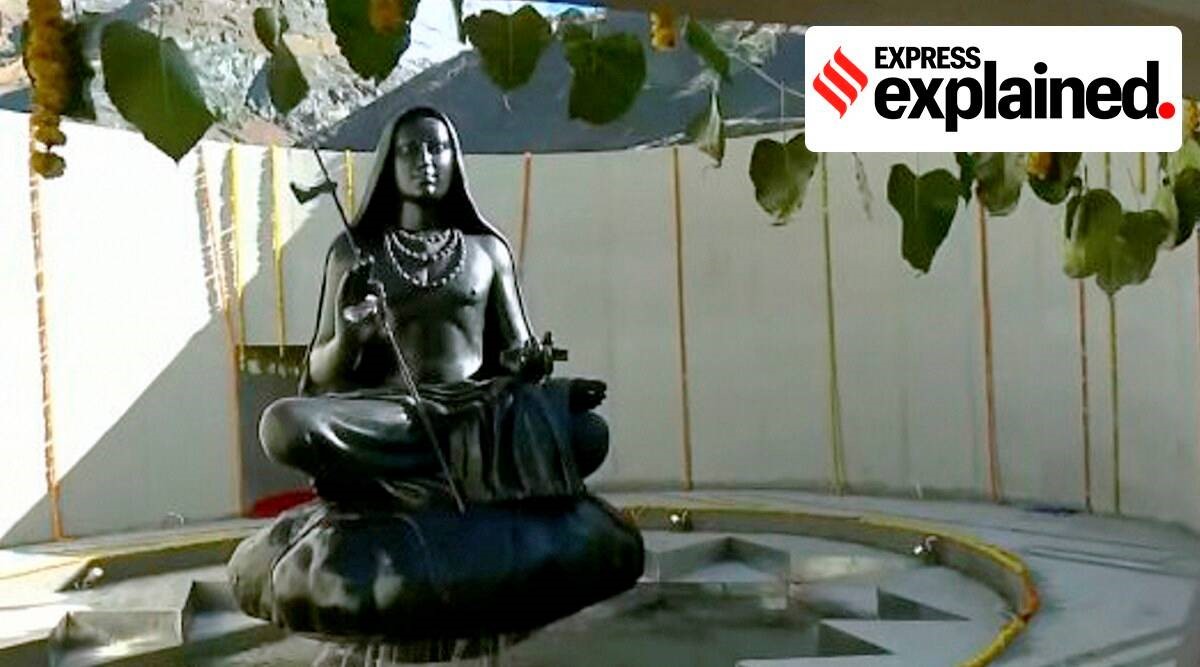
Source:
- Explained: Life, work and legend of Adi Shankara, Advaita master, philosopher nonpareil
- Sri Adi Shankaracharya
Image Source:
New rare diseases policy- India
- Context: India has recently introduced the National Policy for Rare Diseases, 2021 (NPRD).
- The policy aims to lower the cost of treatment of rare diseases and to increase the focus on indigenous research and local production of medicines.
- A disease is considered rare by the WHO when it affects one in 1,000 people, or fewer.
- NPRD commits to provide Rs 20 lakh to cover the one-time treatment cost of diseases falling under Group 1 (disorders amenable to one-time curativetreatment) through the Rashtriya Arogya Nidhi.
- It attempts to cover almost 40% of the population that is eligible under the Pradhan Mantri Jan Arogya Yojana and will also make use of a crowdfunding mechanism to cover the cost of treatment.
- In a country like India, where the incidence of blood disorders is high, NPRD would provide healthcare to patients who are often unable to access treatment due to a lack of funds or knowledge.
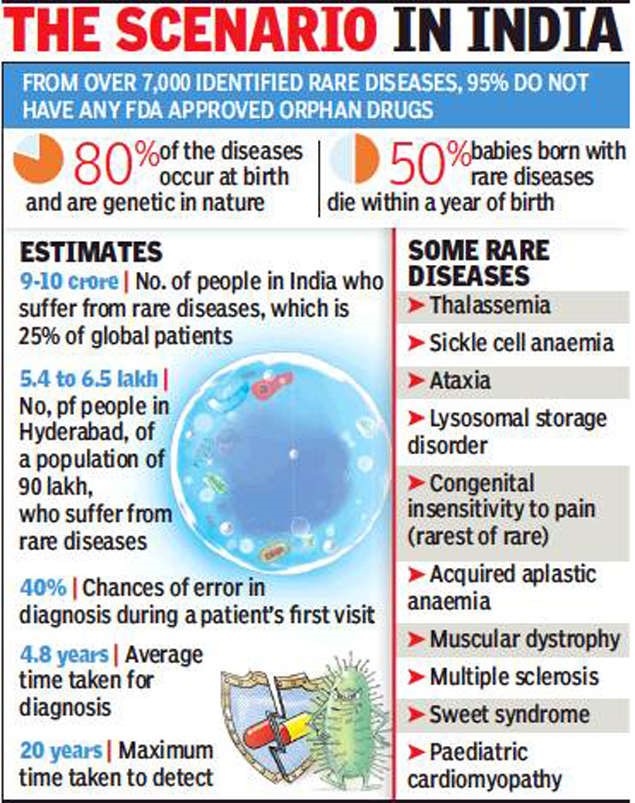
Source:
- India’s new rare diseases policy offers a lifeline to many
- Disquiet over govt.’s new policy for rare diseases
Image Source:
Brain Computer Interfaces (BCIs)
- Context: Recently, the US Food and Drug Administration (FDA) granted approval to a company, to conduct clinical trials of brain computer interfaces (BCIs) in humans in the US.
- A BCI is a computer-based system that acquires brain signals, analyzes them, and translates them into commands that are relayed to an output device to carry out a desired actione. it allows a person to control a device via a connection between their brain and a computer.
- The main goal of BCI is to replace or restore useful function to people disabled by neuromuscular disorders such as cerebral palsy, stroke, or spinal cord injury.
- Brain-computer interfaces do not read minds in the sense of extracting information from unsuspecting or unwilling users but enable users to act on the world by using brain signals rather than muscles.

Source:
- ‘Our notion of privacy will be useless’: what happens if technology learns to read our minds?
- Brain-Computer Interfaces in Medicine
Image Source:
‘Five Eyes’ Club
- Context: Efforts are being taken to induct India into the ‘Five Eyes’ Club.
- The Five Eyes alliance is an intelligence-sharing arrangement between five English-speaking democracies: the US, UK, Canada, Australia and New Zealand.
- It evolved during the Cold War as a mechanism for monitoring the Soviet Union and sharing classified intelligence.
- It is often described as the world's most successful and a sophisticated intelligence alliance in human history.
- Five Eyes membership will give India the support it desperately needs to push back against the People’s Liberation Army’s massive military power.
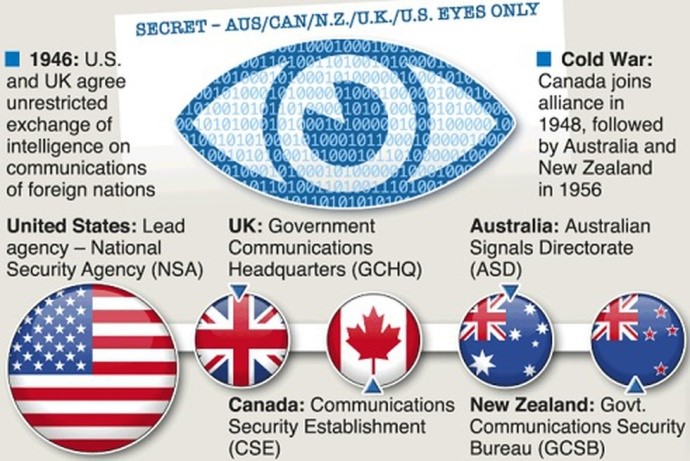
Source:
- Will India be joining the world’s most exclusive intelligence club?
- Five Eyes: Is the alliance in trouble over China?
Image Source:
India needs a new, integrated approach to Eurasia: IE
Essence: The article emphasizes on the pressing need for India to shape up its “Eurasian” policy which would also recalibrate India’s continental strategy. There is also ambiguity with regards to as what constitutes Eurasia. The article has elaborated on the geography and history of the Eurasian region. Also, the historical connect of India with this region has been explored. With growing influence of China in the region, the article suggests three crucial steps w.r.t. India’s Eurasian policy.
First is to put Europe back into India’s continental calculus with greater engagement with both European Union and North Atlantic Treaty Organization. Second is to intensify the dialogue on Eurasian security with Russia. Third is the substantive Indian collaboration with both Persia and Arabia as both holds importance for India in its own way. The framing of India’s Eurasian Policy will reshape lot of dynamics in geopolitics but will open up opportunities in all direction in Eurasia.
Why you should read this article?
- To understand the growing importance of the Eurasia in geo politics.
- To understand the need for India’s integrated approach towards this region.
Source:
No scientific basis to GM crops’ regulation: TH
Essence: The article stresses on the need for reformation in the GM crops regulations. Genetic Engineering Appraisal Committee (GEAC)’s mandate for No Objection Certificate (NOC) from States for conducting field trials with GM crops is fraught with problems. The absence of uniform scientific process for issuing NOC has further compounded this issue. A clear policy is needed where the role of private public institutions, Indian and Foreign private industry is defined.
The article talks about the role of government and the policy makers to identify specific areas in agri- biotechnology, to suit the interest of farmers, consumers and country. The article also elaborates on the potential of GM crops and suggest methods for its better utilization. The Centre and States should come together to put the derailed regulatory process for deployment of agricultural biotechnology-based solutions back on track for the good of our farmers and agriculture.
Why should you read this article?
- To understand that the issue of obtaining No Objection Certificate (NOCs) by States for field trials of GM crops.
- To understand political and administrative quagmire in GM regualtions.
- To understand the potential of GM crops.
Source:
It’s time to engage in ‘lawfare’: TH
Essence: The article talks about the absence of usage of international laws while advancing India’s national security interest. The article highlights various instances where India failed to use an international law-friendly vocabulary to articulate its security interests. One of them being India’s retaliation on Pulwama attack. The act could have been justified on the grounds of right to self-defense which was defended on grounds of doctrine of non-military pre-emptive action’.
There are several reasons for international law remaining at the margins of foreign policymaking in India. First there is marginal involvement of international lawyers in foreign policymaking. Second, apart from the External Affairs Ministry, there are several other Ministries that also deal with different facets of international law. Third, there has been systemic neglect of the study of international law. If India wishes to emerge as a global power, it has to make use of ‘lawfare’ i.e., use law as a weapon of national security which would require massive capacity building in this area.
Why you should read this article?
- To understand the reason for India’s failure to use framework of international law in advancing India’s security interest.
- To understand the instances where India failed to use an international law-friendly vocabulary to articulate its security interests
Source:
Encyclopedia of the Forest
Background
- Tulasi Gowda, a 72-year-old tribal woman from Karnataka, was conferred the Padma Shri award on Monday for her contribution to the protection of the environment.
About Her Contribution
- Tulasi Gowda, belonging to the Halakki indigenous tribe in Karnataka grew up in a poor and disadvantaged family.
- Since the age of 12, she has planted and nurtured thousands of trees.
- Tulasi Gowda also joined the forest department as a temporary volunteer, where she was recognised for her dedication to nature preservation.
- As a child, she did not receive any formal education but her enthusiasm for forest development led to opening up of new vistas.
- She is a lady of immense knowledge about forest, herbs and plants. Today, even at the age of 72, Tulasi Gowda continues to nurture plants and share her vast knowledge with the younger generation to promote the importance of environmental conservation.
- She aims to inculcate the importance of environmental conservation among the younger generation.
- For her dedication and selfless efforts towards the nature, she has been conferred Padma Shri Award 2021.
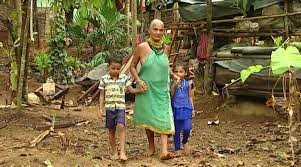
Things to learn:
Selflessness, Compassion, Empathy, Community Service, Dedication.
Quote:
Environment is no one’s property to destroy; it’s everyone’s responsibility to protect. – Mohith Agadi
Source:
Image Source:
Share the article
Get Latest Updates on Offers, Event dates, and free Mentorship sessions.

Get in touch with our Expert Academic Counsellors 👋
FAQs
UPSC Daily Current Affairs focuses on learning current events on a daily basis. An aspirant needs to study regular and updated information about current events, news, and relevant topics that are important for UPSC aspirants. It covers national and international affairs, government policies, socio-economic issues, science and technology advancements, and more.
UPSC Daily Current Affairs provides aspirants with a concise and comprehensive overview of the latest happenings and developments across various fields. It helps aspirants stay updated with current affairs and provides them with valuable insights and analysis, which are essential for answering questions in the UPSC examinations. It enhances their knowledge, analytical skills, and ability to connect current affairs with the UPSC syllabus.
UPSC Daily Current Affairs covers a wide range of topics, including politics, economics, science and technology, environment, social issues, governance, international relations, and more. It offers news summaries, in-depth analyses, editorials, opinion pieces, and relevant study materials. It also provides practice questions and quizzes to help aspirants test their understanding of current affairs.
Edukemy's UPSC Daily Current Affairs can be accessed through:
- UPSC Daily Current Affairs can be accessed through Current Affairs tab at the top of the Main Page of Edukemy.
- Edukemy Mobile app: The Daily Current Affairs can also be access through Edukemy Mobile App.
- Social media: Follow Edukemy’s official social media accounts or pages that provide UPSC Daily Current Affairs updates, including Facebook, Twitter, or Telegram channels.

